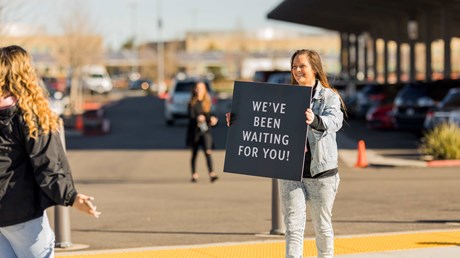Two years in, more congregations are open without COVID-19 precautions, but Americans aren’t getting more likely to show up.

Churches waiting for more people to return on Sunday mornings are still waiting, two years into the pandemic.
Over the past six months, nearly all houses of worship have reopened for services and, week by week, more dropped mask requirements, social distancing, and other COVID-19 precautions. But the latest figures from Pew Research Center show that once-regular churchgoers aren’t much more likely to show up than they were back in September.
While people steadily returned to church services in the first half of 2021, the trend hit a plateau. Going into the third year since COVID-19, congregations and their leaders are left with the reality that the people who worshipped alongside them before may not be coming back.
Around two thirds of people who usually attend church at least monthly said they were back in the pews in March (67%), roughly the same as in September 2021 (64%).
“2021 had many leaders clinging to the idea that the next season—Easter, the new school year, Christmas, etc.—would bring attendance back to 2019 levels. For most churches, that ‘magic season’ never materialized,” wrote Carey Nieuwhof, former pastor and church leadership strategist, at the start of the year.
“In 2022, the constant cycle of hope and disappointment will give way to the new reality that this is your church. It will become evident that some of the people who said they’re coming back later clearly aren’t coming back—ever.”
Churchgoing evangelical Protestants have returned at the highest rates, but their figures are also holding steady rather than growing: 75 percent attended in March and 72 percent the September before.
Black Protestants remain the most ...
from Christianity Today Magazine
Umn ministry


.gif)

.gif)
.gif)
